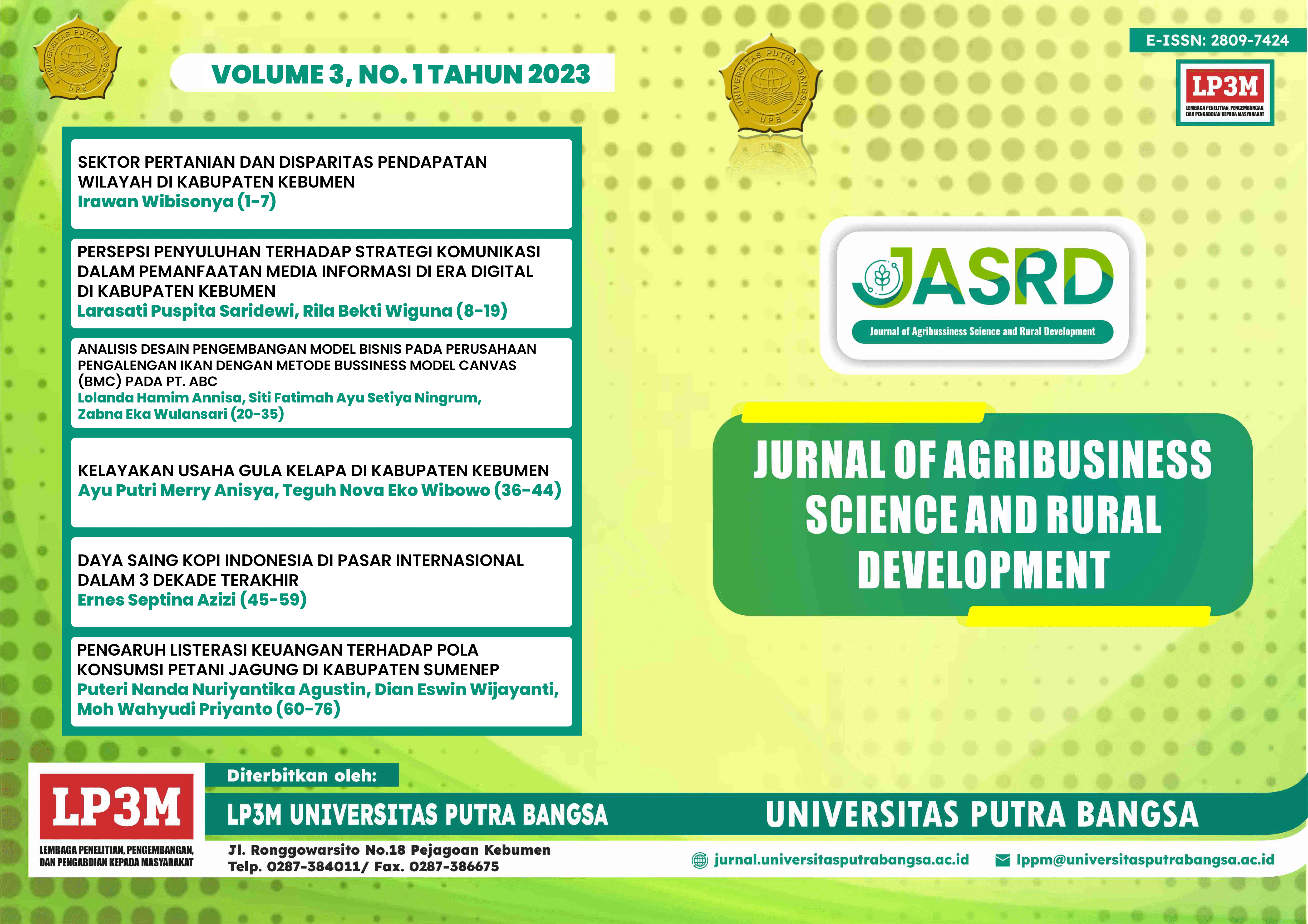Sektor Pertanian dan Disparitas Pendapatan Wilayah di Kabupaten Kebumen
DOI:
https://doi.org/10.32639/jasrd.v3i1.729Keywords:
regional economy, Williamson IndexAbstract
Development is a series of processes of change towards a better situation in an effort to improve welfare through increasing people's standard of living as measured by increasing the rate of economic growth. Economic development is able to increase the per capita income of the population in the long term if it can be carried out well and sustainably. This is because the implementation of economic development is able to encourage economic growth and improve income distribution for society. This research aims to analyze how the role of the agricultural sector, which is a driver of the economy in various regions, contributes to determining regional income disparities in Kebumen Regency. Data analysis uses the Williamson Index CVw method which is an indirect approach used to measure the magnitude of regional income inequality. The results of this research show that the economic growth and contribution of the agricultural sector to regional income in Kebumen Regency tends to be positive, where both have quite large values and will increase in 2022. Income inequality between regions in Kebumen Regency has increased between 2020 and 2022. Inequality occurs between Income from the agricultural sector is lower compared to without involving the agricultural sector. The average value of the Williamson index shows 18.86 percent of the disparity when including the agricultural sector and 18.89 percent of the disparity when not including income from the agricultural sector. There is a difference of 0.03 percent, which is the magnitude of the influence of the agricultural sector in reducing the level of regional disparities in Kebumen Regency.






